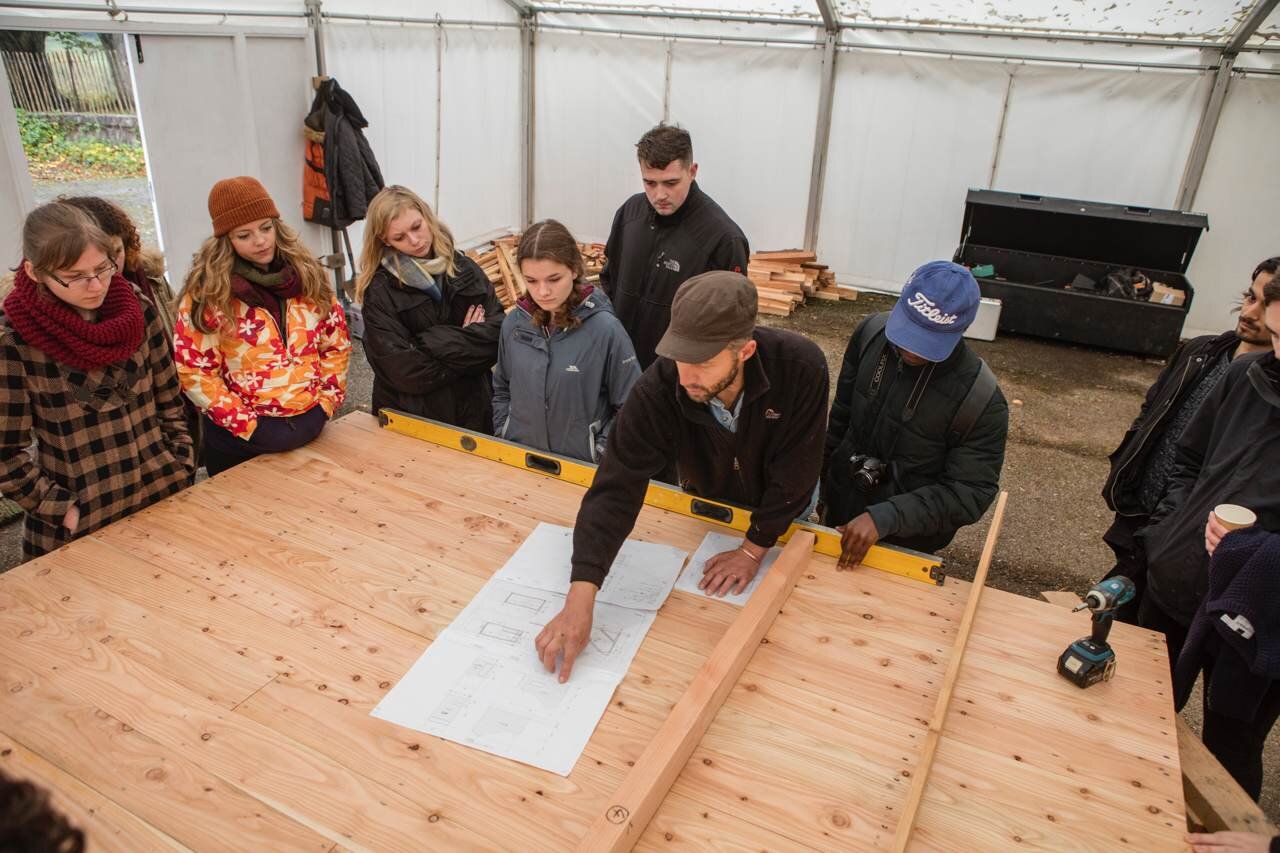Students create unique camping experience on Dartington estate
Second and third-year students were tasked with designing a structure that embodied the values and principles of the estate’s vision and strategy.
The Tiny House – a striking new eco-pod designed by students from the University of Plymouth – highlights a unique partnership with Dartington Hall Trust.
Created using materials from the 1,200-acre estate, the building has been finished to a high standard by the students in conjunction with the Trust’s own craft education programme on the estate in South Devon.
The project was led by the University’s Head of Architecture and Built Environment Simon Bradbury and the Trust’s Craft Learning Programme Manager Lou Rainbow, as part of a longer-term ambition to support students’ learning in sustainable education through direct experience of making. As such, it goes beyond them simply creating the design for the project, as they were also involved in all aspects of the building process, translating their visions into a product that will form part of the estate’s new camping facilities.
For this year, second and third-year students were set the task of designing a structure that should embody the values and principles of the estate’s emerging vision and strategy, and be an exemplar in sustainable construction and positively contribute to its surroundings.
Eleven teams of students from the BA (Hons) Architecture and BA (Hons) Architecture Technology and the Environment courses took part, and work to build the eco-pod began in October 2016. Since then around 140 students have been involved in constructing the Tiny House, which was completed in January, with the finished design being unveiled at the end of February 2017.
Explaining the idea behind the partnership, Simon Bradbury said:
“We were really keen that our students get the opportunity to not only design projects but have the experience of seeing them from conception right through to completion. Because they are in the whole process, the students are able to see the consequences of their early design decisions providing a really hands-on learning experience you cannot replicate in the studio. The project has already had a noticeable impact on the students’ work, both on the new designs they are producing but also in allowing them to learn to work as a team and in a professional group.”
Lou Rainbow added:
“We’re thrilled to have been able to work with the next generation of young architects to build the first Tiny Home at Dartington. The partnership project embodies the Trust’s new strategy to experiment with ways to live a many-sided life, and draws on the Trust’s rich craft education history of ‘learning by doing’. The students have created a building that is profoundly of this place – with beautiful views of night skies and the land, and with the warmth and comfort of materials grown on that land.”
The winning team behind the Tiny House comprised third year Architecture students Tom Kimberley, Elliott Dennis and Matthew Fox, alongside second years Tom Simmons and Callum Swift. They designed a compact two-storey structure, offering separate living and sleeping areas but also incorporating a skylight to ensure users could enjoy natural light during the day and a view of the stars after darkness fell.
It uses local and sustainable materials including larch, Douglas fir and sheep’s wool, while craft tutors on the Trust’s wide-ranging craft education programme are now working to create a bespoke interior.
The students said:
“We had worked on live sites before but not with the knowledge that we would be building something at the end. Because we knew we were going to be constructors not just designers, and we would have to brief more than 100 fellow students, it meant we had to look at things in a new level of detail. It has been a brilliant opportunity and given us a better understanding of the whole design and construction process. This project will always be apparent in our careers when we are thinking about traditional build qualities and the processes involved.”
The pod will be available for the public to rent out later in 2017 and will provide guests with a unique experience as part of the Trust’s new camping initiative. The University and Trust have now agreed to work on similar projects for the coming three years, offering more students this kind of opportunity and creating a unique camping experience within the grounds of the estate.
Simon Bradbury, Head of Architecture and Built Environment at the University of Plymouth.
Third year Architecture students Tom Kimberley, Elliott Dennis and Matthew Fox, and second years Tom Simmons and Callum Swift.


